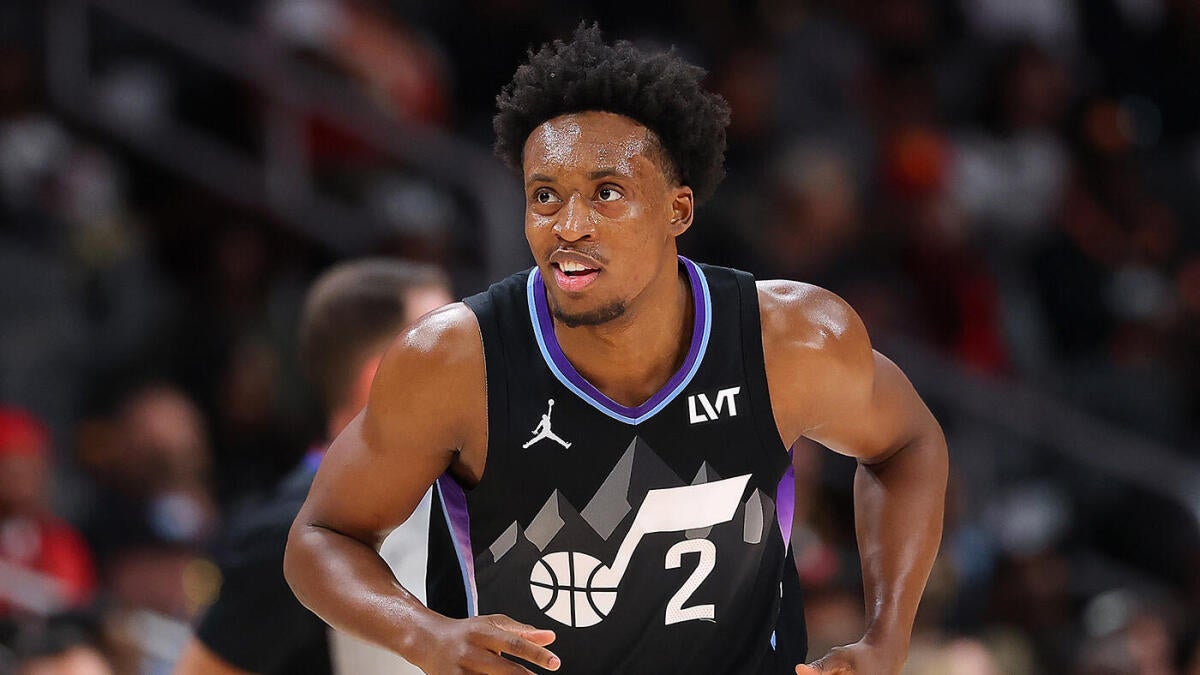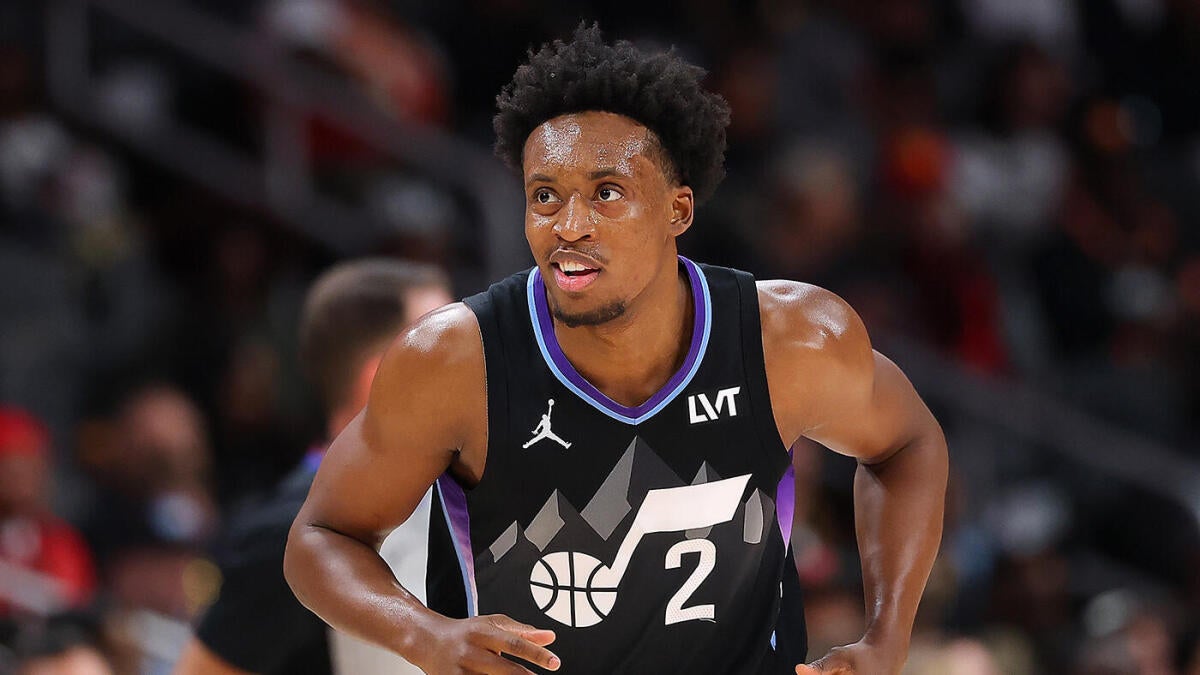The recent NBA trade involving the Utah Jazz and the Charlotte Hornets has sparked significant discussions among analysts and fans, highlighting the strategic shifts both teams are making to address their respective roster needs. The exchange of guard Collin Sexton and a future second-round pick for big man Jusuf Nurkić underscores the contrasting priorities of the two franchises as they navigate their paths toward competitiveness.
Understanding the Trade Components
The trade’s core involves the Utah Jazz sending Collin Sexton, a dynamic guard known for his scoring prowess, along with a future second-round pick (either in 2030 or 2031) to the Charlotte Hornets. In return, the Jazz acquired Jusuf Nurkić, a seasoned center recognized for his physicality and interior presence. This swap of a guard for a center reflects the divergent strategic approaches of the two teams.
Collin Sexton, celebrated for his ability to create his own shot and his relentless offensive energy, brings significant value as a scoring weapon. However, his tenure with the Jazz has been marked by questions about his fit within the team’s system and his overall impact on team success. On the other hand, Nurkić offers a proven defensive presence, strong rebounding, and a reliable pick-and-roll option, which the Jazz aim to leverage to bolster their frontcourt.
Impact on the Utah Jazz
For the Utah Jazz, the acquisition of Nurkić signals a strategic shift toward enhancing their interior defense and establishing a more formidable presence in the paint. This move suggests a pivot toward a more balanced offensive approach, incorporating a dominant post player to complement their perimeter-oriented attack. Nurkić’s ability to command attention inside could alleviate pressure on the Jazz’s perimeter defenders and create more versatile offensive sets.
However, parting ways with Sexton, a guard capable of creating his own shot and exerting offensive pressure, comes with risks. The Jazz may be signaling confidence in their other backcourt players or hinting at further roster adjustments. The inclusion of a future second-round pick in the deal indicates the Jazz’s willingness to prioritize immediate frontcourt support over future draft capital, reflecting their focus on short-term competitiveness.
Impact on the Charlotte Hornets
The Charlotte Hornets, in acquiring Sexton, gain an assertive scorer who can energize their backcourt and provide an additional offensive punch. Sexton’s ability to create scoring opportunities and his relentless playing style align well with the Hornets’ developing roster, potentially filling a gap in guard leadership and scoring consistency. His fiery style could inject much-needed intensity into the Hornets’ backcourt.
Additionally, securing a future second-round pick alongside Sexton enhances the Hornets’ draft flexibility, allowing them to build their roster or accumulate trade assets. This trade suggests the Hornets’ commitment to a guard-centric offensive scheme, emphasizing youth, speed, and perimeter-oriented play as they aim to accelerate their competitive growth.
Strategic Motivations Behind the Trade
This trade reflects the divergent trajectories and needs of the Utah Jazz and Charlotte Hornets. The Jazz appear to prioritize interior strength and veteran presence, possibly eyeing a more balanced and physically imposing lineup. Their decision may also be influenced by cap considerations, roster depth, or the philosophical direction favored by their coaching staff and management.
In contrast, the Hornets seem to embrace a more aggressive, guard-focused approach. Sexton’s acquisition aligns with their goal of building a perimeter-oriented offensive scheme, enhancing scoring versatility, and injecting intensity into their backcourt. This move suggests a commitment to youth development and dynamic perimeter play, key elements in the Hornets’ long-term vision.
Potential Challenges and Opportunities
Both teams face challenges and opportunities in integrating their new players effectively. For the Jazz, blending Nurkić’s style with their existing offensive frameworks and managing his health and durability will be crucial. Nurkić’s presence could elevate the Jazz’s defensive identity, but his fit within their offensive system remains to be seen.
For the Hornets, harnessing Sexton’s scoring while maintaining team chemistry and defensive solidity will be key. Sexton’s ability to create his own shot could be a double-edged sword, as it may disrupt the Hornets’ defensive rotations if not managed carefully. Additionally, the Hornets must ensure that Sexton’s aggressive playing style complements rather than overshadows their team-oriented approach.
Moreover, fans and analysts are divided on the trade’s wisdom. Some question the Jazz’s rationale for letting go of a high-scoring guard, while others applaud the Hornets for securing an immediate offensive boost. Ultimately, the success of this trade will depend on coaching adjustments, player chemistry, and how well the new additions perform in their respective roles.
Conclusion: A Calculated Gamble on Both Sides
This trade between the Utah Jazz and Charlotte Hornets is more than a mere swap of players; it embodies strategic recalibrations shaped by each team’s future vision. The Jazz aim to strengthen their interior and embrace a veteran presence in Nurkić, while the Hornets inject fresh scoring talent with Sexton and retain an eye on future assets.
As the new NBA season unfolds, the real impact of this trade will manifest through on-court performances, team evolution, and how well each player capitalizes on their fresh start. For now, both franchises have rolled the dice, betting that this exchange aligns with their long-term ambitions and sets a course for greater competitiveness in the league. The success of this trade will ultimately be measured by the teams’ ability to integrate their new pieces and achieve their respective goals.












